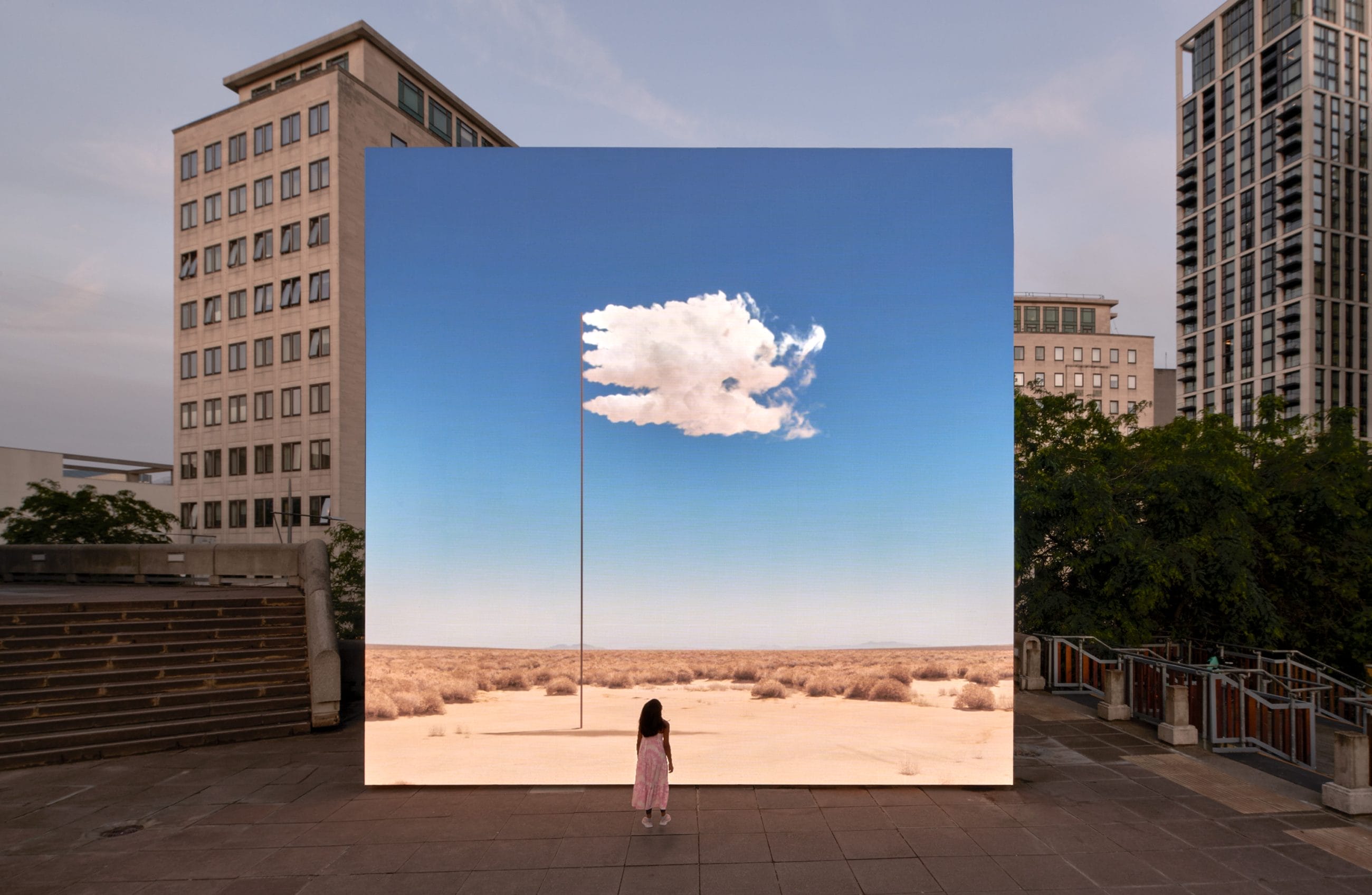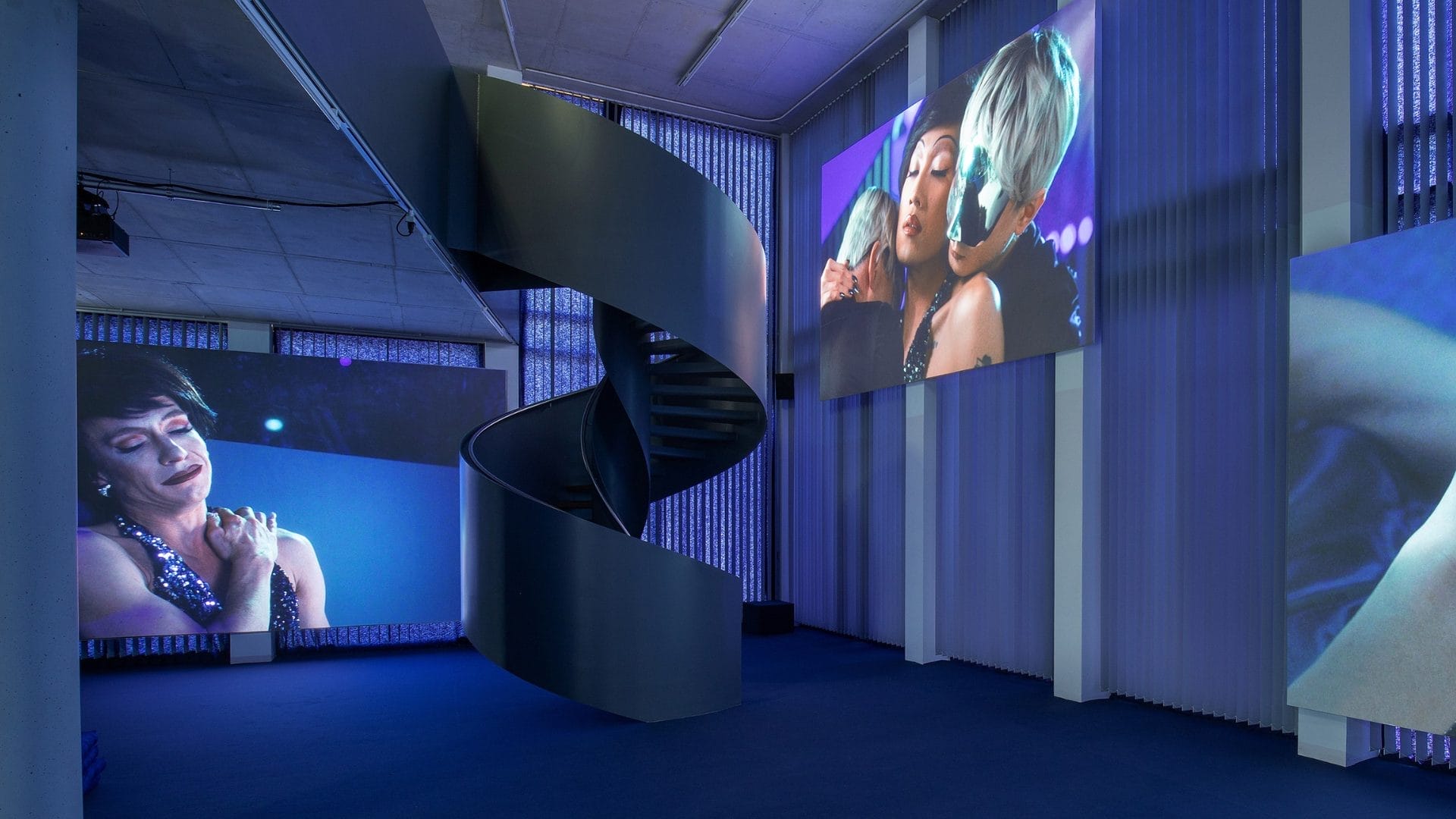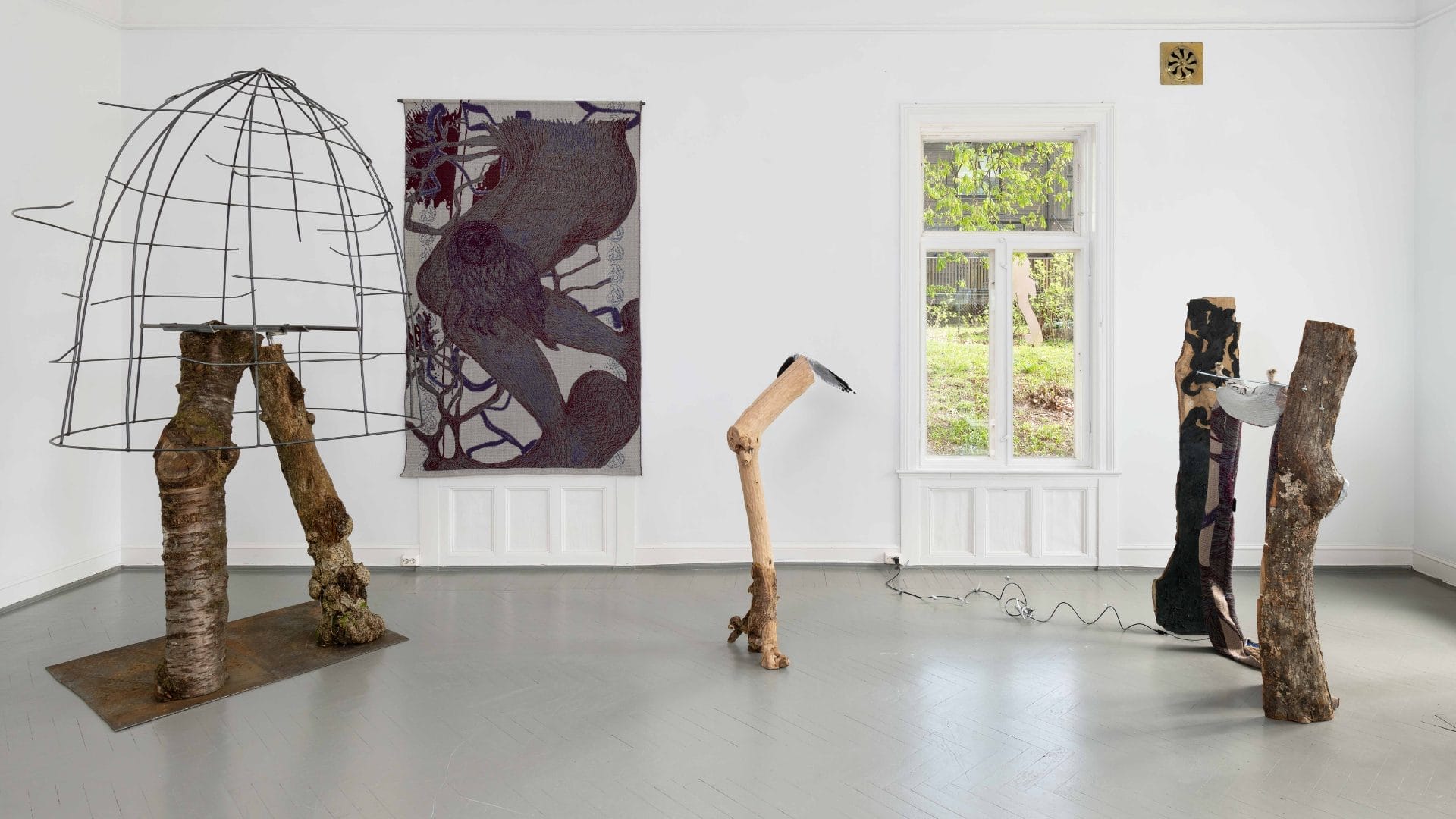
John Gerrard: The Art of Real-Time Simulation
“The simulacrum is never that which conceals the truth; it is the truth that conceals there is none. The simulacrum is true.”
— Jean Baudrillard
John Gerrard is an Irish contemporary artist renowned for championing the use of simulation in art. Born in 1974, he blends a formal aesthetic with advanced technology, pioneering real-time 3D worlds to explore complex relationships between humanity, the environment, and society. His works address global themes such as ecological crises, energy, and geopolitical control.
Gerrard’s creations are not static images but dynamic virtual worlds that continuously evolve, responding to time and atmospheric variables. Using sophisticated graphics engines from the video game and military industries, he constructs virtual environments that offer immersive, contemplative experiences. This approach allows him to depict long time cycles and invisible processes, creating a space-time dimension close to natural experiences.
Combining meticulous digital realism with incisive socio-environmental critique, Gerrard invites reflection on humanity’s role in global ecological and political systems. Technology becomes not only an expressive tool but an integral part of the artwork’s meaning, providing new languages to address urgent issues.
Gerrard’s education at institutions like the Ruskin School, Oxford University, Art Institute of Chicago, and Trinity College, Dublin has shaped his multidisciplinary approach. Influenced by contemporary art and technological innovations, he integrates elements, of photography, sculpture, experimental cinema, and other forms to create a distinctive contemporary visual language.
Gerrard highlights the tensions between technological progress and environmental sustainability through his works, reflecting on current issues and encouraging dialogue about the future. His ability to merge art and science has opened new paths in digital art, influencing a generation of artists and redefining technological possibilities in art.

Studies at the Ruskin School of Drawing and Fine Art and Trinity College
At the Ruskin School, Gerrard focused on sculpture and spatial representation, exploring form and concept—themes he continued to develop. He experimented with 3D scanning as a form of “sculptural photography,” incorporating digital elements into artistic representation. Ruskin’s rigorous academic environment encouraged him to investigate space and materiality.
During his MFA studies at the School of the Art Institute of Chicago, Gerrard explored 3D modeling and simulation as tools to represent temporal dynamics and natural processes. The precision of computer graphics allowed him to create virtual spaces responsive to atmospheric conditions, establishing a complex visual language where technology serves as both medium and content.
At Trinity College, Dublin where he completed an MSc, Gerrard delved deeper into digital technologies and 3D simulation, acquiring essential skills when digital applications in art were novel. This intellectually stimulating environment enabled him to adopt a hybrid approach, integrating digital technology as a crucial expressive element.

Technology and Creative Methodology
Gerrard’s artistic practice is marked by his pioneering use of real-time 3D simulations. This methodology allows him to create immersive works that blur the line between reality and representation. Gerrard uses advanced graphics engines to construct detailed virtual worlds that evolve over time, responding to environmental variables like sunlight, weather, and seasonal changes.
Central to his approach is using sophisticated graphics engines, originally developed for military and gaming purposes, to create autonomous virtual ecosystems that respond dynamically to real-world data. His simulations are not pre-recorded loops but continuously generate unique images, exploring non-linear temporality and offering an expanded perception of time.
Gerrard’s creative process is highly collaborative and interdisciplinary. Each project begins with in-depth research and field documentation, during which he gathers photographic, topographical, and environmental data. Gerrard then works closely with a team of experts, including programmers and 3D graphics specialists, transforming collected data into high-resolution simulations crafted with scientific precision. The synergy between art and technology is at the core of his methodology.
For Gerrard, technology is not merely a tool but a genuine artistic language. His works explore the expressive potential of digital simulation, using it to create complex visual narratives that address urgent social and ecological themes. Through the simulation of industrial processes or natural phenomena, he makes visible global dynamics like pollution, energy dependency, and geopolitical control. Technology thus becomes a critical instrument for investigating humanity’s interaction with the environment.

Gerrard’s works offer an immersive experience through high visual definition and intricate detailing. Real-time simulation creates a sense of presence, where viewers observe imperceptible changes similar to those in nature. The real-time element engages viewers in a silent dialogue with the piece, inviting prolonged contemplation and a deeper connection with the themes.
Gerrard’s impact on digital art lies in his demonstration of the expressive potential of real-time simulations. His practice exemplifies how art benefits from interdisciplinary collaboration, merging artistic and scientific expertise to create aesthetically captivating and conceptually powerful works. He has redefined digital art, using technology not only for visual effects but also to tackle critical contemporary issues, elevating digital simulation to an autonomous art form.
The flag is a recurring theme in his recent works, serving as a metaphor for identity, sovereignty, and environmental impact. In “Western Flag (Spindletop, Texas) 2017,” Gerrard portrays the site of the first major U.S. oil field with a black flag of smoke rising perpetually, representing our dependency on oil and turning pollution into a monument to ecological destruction.
In “Surrender (Flag) 2023,” Gerrard presents a delicate white flag of vapor, symbolizing hope for a future less reliant on fossil fuels. The choice of vapor emphasizes the fragility and transience of our actions, encouraging reflection on sustainability.
“Solar Reserve at Art Basel Unlimited, 2014” explores the complexities of renewable energy. The work simulates a solar power plant surrounded by 10,000 mirrors that track the sun, offering a detailed representation of the passage of time. The work highlights the potential of renewable sources without idealizing them, prompting reflection on the promises and limitations of sustainable technologies.


Animals play a central role in some of Gerrard’s works, symbolizing extinction and loss. “Endling (Martha) 2021” portrays the last known specimen of the American passenger pigeon, highlighting the irreversibility of loss and collective responsibility in preserving biodiversity. In “X. laevis (Spacelab) 2017,” Gerrard intertwines the history of science with ethical reflections on scientific experiments.
Themes of geopolitical control and militarization are present in works like “Exercise (Djibouti) 2012” and “Infinite Freedom Exercise (near Abadan, Iran) 2011.” These simulations critique the dehumanizing nature of military power and raise questions about global power dynamics. In “Untitled (near Parndorf, Austria) 2018,” Gerrard addresses human suffering and migration crises, using a silent landscape to evoke the horror of a tragic event and prompt reflection on migration policies.
In “World Flag (Amazon, Danube, Nile, Yangtze) 2017,” Gerrard reflects on the tension between natural beauty and pollution, emphasizing the importance of protecting natural resources and balancing development with conservation.
Through his works, Gerrard further explores the impact of extractive industries, renewable energies, militarization, and human tragedies linked to migration. His real-time digital simulations offer sharp critiques of economic and political systems that contribute to environmental and social crises, raising questions about our role in an interconnected global system.

Legacy for Future Generations
Gerrard’s legacy lies in his vision of art that combines technological innovation with social commitment. He encourages future artists to consider technology as a critical platform for representing the world, underscoring the responsibility of art to actively participate in public discourse. Gerrard’s work demonstrates that digital art can be a critical lens through which to examine reality, leaving a lasting impact on art and social consciousness.

fakewhale
Founded in 2021, Fakewhale advocates the digital art market's evolution. Viewing NFT technology as a container for art, and leveraging the expansive scope of digital culture, Fakewhale strives to shape a new ecosystem in which art and technology become the starting point, rather than the final destination.
You may also like
Unveiling Identities: The Cinematic Reimagination of Brice Dellsperger
Entering the “Jalousies” exhibition by Brice Dellsperger at the Dortmunder Kunstverein,
Ingeborg Tysse, WILD WATCH at Norwegian Sculptors Society, Oslo
WILD WATCH by Ingeborg Tysse, curated by Tatiana Lozano, at Norwegian Sculptors Society, Oslo, 24/04
Dawn is now once again, at GPS – Greenfield Project Space, London
Dawn is now once again by Šimon Chovan, Estefanía B Flores, Janina Frye, Lidija Kononenko, Maya Ma




